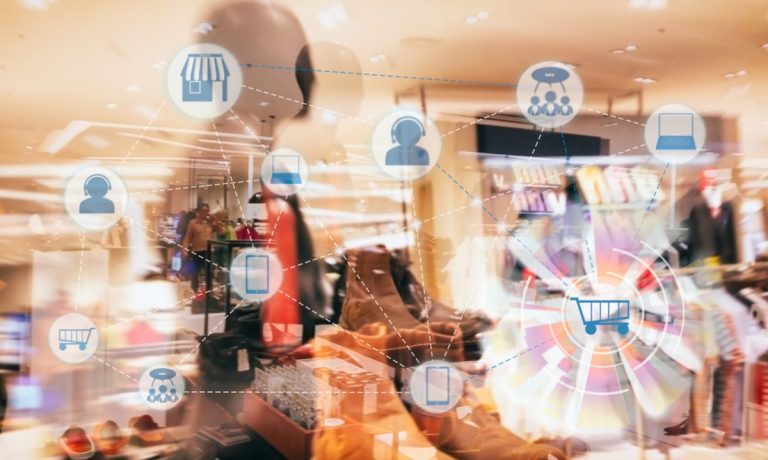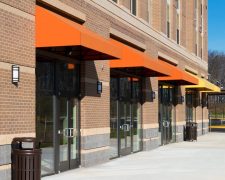In-store is back in style for 2022 as new thinking, design and technology concepts merge to create engaging and safe experiences that redefine omnichannel commerce and payments.
With a kind of détente taking hold where digital and physical are getting more complementary than competitive, the new year is starting off with household name brands and virtual unknowns pushing to bridge digital and physical to maximize channels in a pivotal year.
Discussing trends literally reshaping retail, Molly Murphy, managing director and principal at design, architecture and planning firm Gensler, recently told Karen Webster, “We are seeing a lot of our retailers now use their stores in a way [that supports] their eCommerce sales. We also see a lot of eCommerce brands coming to us to help them to find what their brick-and-mortar presence should be and how it complements their online brand.”
Gensler is using a digital blueprint overlay system during the store design/redesign phase that maps and optimizes consumer touchpoints, tapping into social shopping and related trends.
In its Design Forecast® 2022 Gensler said “Customers expect retailers to be communicative and responsive through multiple channels. Stores will implement a new baseline of connectivity with social shopping,” adding that “The most effective retailers will design agility into their spaces through a test and learn process. The most effective designs can scale up quickly.”
Such approaches not only improve sales but also customer lifetime value, fortifying loyalty at a time when consumers are more willing to switch vendors of any kind for better experiences.
Advertisement: Scroll to Continue
See also: Retailers Use Digital Blueprints to Reinvent the Physical Store Experience
Examining this dynamic at work in the pharmacy and grocery spaces, Decoding Consumer Loyalty: The Customer Loyalty To Merchants Survey 2022, a PYMNTS and Toshiba Global Commerce Solutions collaboration, found that 51% of grocery and 47% of pharmacy shoppers, respectively, want digital inventory management to know if items are in-stock before they go.
Additionally, 19% of grocery customers and 17% of pharmacy customers “see the availability of a mobile app that helps them manage in-store shopping” as a reason to remain loyal to favorite merchants offering digital tools to improve physical shopping excursions, before and during.
Decoding Consumer Loyalty found that 80% of consumers prefer shopping for groceries and pharmacy items in-store, using apps and websites to make sure shopping is worth the trip.
Get the study: Decoding Consumer Loyalty: The Customer Loyalty To Merchants Survey 2022
It’s been an active time for retailers and their technology partners as everyone from Amazon to Walmart invests in improving how consumers experience physical stores going forward.
In a Jan. 27 blog, Walmart announced its new “Time Well Spent” initiative starting at its incubator location in Springdale, Arkansas, encouraging shoppers to spend more time in store.
Walmart said, “the first phase of our store redesign that was focused on navigation and wayfinding” with nearly 1,000 stores now benefitting from a new “sleek design aesthetic, a layout that spotlights products and an end-to-end digital navigation that guides customers throughout their journeys.”
Phase 2 involves innovations including an “activated corners” displays, new store-within-a-store concepts and digital touchpoints that use “stores as an initial display of the great variety of products and brands, we can communicate to customers the vast range of products and services Walmart offers online through the strategic use of QR codes and digital screens.”
See also: Walmart Debuts Interactive Store Dubbed ‘Time Well Spent’
Over at Amazon, interactive fitting rooms are back and better than before as the eCommerce titan moves more purposefully into physical retail pilots this year.
As PYMNTS reported on Jan. 20, the new Amazon Style store integrates the Amazon Shopping app so “customers simply scan an item’s QR code to see sizes, colors, overall customer ratings, and additional product details. With the tap of a button, shoppers can add the item to a fitting room or, if they don’t need to try it on, send it directly to the pickup counter.”
“The goal around this has really raised the bar for what customers can expect with this omnichannel experience,” Director of Investor Relations Dave Fildes said in November.
“We like the hybrid model and we’re working on continuing to evolve a lot of our interesting in-store experience that will resonate with customers,” Fildes told analysts.
See also: Amazon Opening Fashion Store with Digital Fitting Rooms




